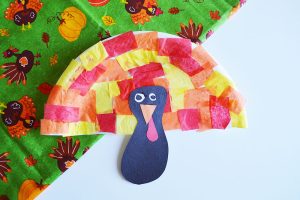
20 Snowman Crafts
Who wants to build a snowman? We do! This week we’ve rounded up some snowman crafts and activities. Each link contains a fun…
Did you know that some students do not develop a hand preference until kindergarten or at 5 or 6 years old? When students write with their left hand, they should not be discouraged from doing so. They do not choose their left hand in the same way that you didn’t choose to use your right hand.
Our society uses a left-to-right reading progression. People who write with the right hand use their muscles to pull the pencil from left to right. I encourage you to try writing with your left hand….it’s difficult since you must ‘push’ the pencil across the page. It’s true! Many of my super students who are left-handed describe tired muscles with prolonged writing tasks.
Many students with special needs have difficulty using both hands together. This skill is called BILATERAL INTEGRATION and is required for tasks like cutting paper and getting dressed. One hand is the ‘doer’ and the other hand is the ‘helper.’ For example, when writing, one hand holds the pencil and the other hand holds the paper to stabilize it. For more information on bilateral integration, read my earlier informational post here.
 ‘Out of the POCKET Tips’ for left-hand writing
‘Out of the POCKET Tips’ for left-hand writing
1 Use your left hand when teaching letter formation to your students who hold the pencil with their left hands. As with everything in handwriting, provide a perfect model for letters and when forming them. It would be wonderful if a fellow left-handed student or therapist can demonstrate proper letter formation!
2 Remember to use the correct seating and proper chair height. A student needs to maintain a ninety-degree angle at the ankles, knees, and hips. The feet should be flat on the floor.
3 Point the pencil toward the student’s left shoulder and make sure the elbows are not forming ‘chicken wings.’ The left arm should rest alongside the body comfortably.
 NEW! Road-themed letters and numbers printable download.
NEW! Road-themed letters and numbers printable download.
4 Use loose-leaf paper so students’ arms do not rub against the wire of a notebook. Clip-boards work well too. There are awesome websites such as www.leftyslefthanded.com that sell products just for left-handers.
5 Use a fine-tip marker or felt-tip pen to decrease smudging when the left-hand drags across the written words. Make sure the pencil lead is hard (a number three pencil works better than a number two pencil).
6 Turn the paper 30 degrees (left corner up) instead of ‘hooking’ the arm over the paper or using a flexed or ‘bent’ wrist position.
 Looking for Q-Tip Painting activities? We are always adding more to our Q-Tip activity library!
Looking for Q-Tip Painting activities? We are always adding more to our Q-Tip activity library!
7 Extend the wrist slightly to allow the thumb and fingers to work best together when writing.
8 Use the right-hand as a ‘helper’ hand to stabilize the paper while the left-hand writes.
For more tips download our FREE 5 PAGE Left-Hand Writing Informational Packet HERE.
Looking for more freebies? Check out the free section of my website here.



